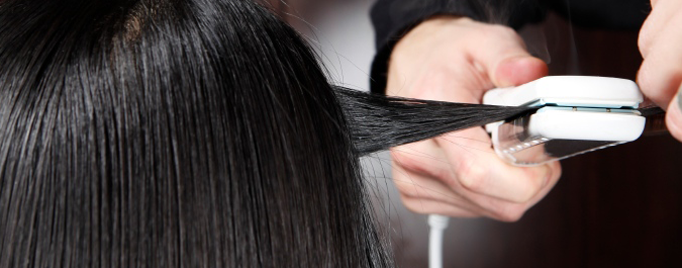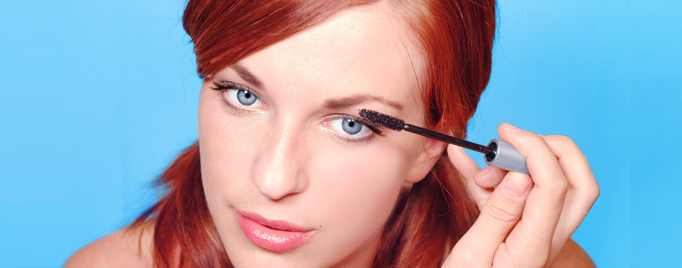Lead and lead products are “reasonably anticipated to be human carcinogens.”

It’s time to break down some beauty-related cancer fact and fiction.
With all the news coverage out there claiming this product or that product may cause cancer, it sometimes may be hard to figure out what’s safe, what’s hazardous, and what’s plain, old sensationalized. One way to minimize the damage and fear caused by misinformation is to identify respected sources—such as the US National Cancer Institute (www.cancer.gov) or Food and Drug Administration—and use them as primary resources for your health information. Knowing the facts is one way to keep your beauty routine good-looking inside and out.
Hair Dye: It is estimated that more than one-third of women over age 18 and about 10 percent of men over age 40 use some type of hair dye. Hair dyes are full of chemicals—5,000, to be precise—and that hasn’t escaped the notice of cancer researchers.
Decades ago, researchers began studying chemicals used in hair dye. They found that early dye formulations contained chemicals that could cause cancer in animals. Not surprisingly, manufacturers changed the formulas and eliminated some of these chemicals in the United States around 1980. Because so many people use hair dyes, researchers continue to monitor whether chemicals in hair coloring products can increase risk for cancer in humans.
According to US National Cancer Institute (NCI), the evidence for increased risks for cancer from modern hair dyes use is limited and inconsistent. Some studies have indicated that people who used hair dyes had an increased risk for bladder and breast cancer, as well as cancers of the blood and bone marrow (such as non-Hodgkin lymphoma and leukemia), while other studies have not. Based on its review of the evidence, the Working Group of the International Agency for Research on Cancer (IARC) concluded that personal use of hair dyes is “not classifiable” as cancer-causing to humans. So it is still unclear if personal use of hair dyes can increase your risk for cancer. If you would like to learn more about hair dye and health risks, the Outreach and Information Center of the U.S. Food and Drug Administration’s Center for Food Safety and Applied Nutrition has information about hair dyes and how they are regulated. Visit http://www.fda.gov/Food/default.htm (search term: hair dye).
Nail Products: When you head in for a manicure and you see the manicurist wearing a dust mask, you may have wondered about your own safety too. Nail salon workers wear dust masks to minimize breathing in dust particles when filing or shaping artificial nail enhancements. Dust masks are intended to prevent inhalation of dust, but they do not protect against inhalation of chemicals. Professional nail care products are typically formulated to minimize exposure to hazardous chemicals that may cause adverse health effects. However, overexposure may occur and could result in skin irritation, allergic reaction, or serious eye injury. But as far as cancer is concerned, there is no known risk associated with using nail products. To read more about safety information for nail products, visit www.fda.gov (search term: nail products).
Lipstick: Some of the natural colors used in lipstick contain trace amounts of lead. The US National Toxicology Program (NTP) of the US National Institute of Environmental Health Sciences of the National Institutes of Health says that lead and lead products are “reasonably anticipated to be human carcinogens.” However, the Food and Drug Administration (FDA) has assessed the potential for harm to consumers from use of lipstick containing lead and determined that there is no safety concern because lipstick is intended for topical use and is only ingested incidentally and in small quantities. Always use your lipstick only as directed and keep the products away from children. Visit www.fda.gov (search term: lipstick) for more.
Hair Straightening: If you or your stylist uses hair smoothing or straightening products keep in mind that some of these products contain formaldehyde. Although formaldehyde is naturally occurring and is also used widely in many consumer products, this chemical is a known human carcinogen (cancer-causing substance) and can also cause skin irritation and sensitization.
People can be exposed to formaldehyde in the workplace and in their home environment, but the highest levels are found in work settings where formaldehyde is produced or used. In a salon, formaldehyde levels are elevated when formaldehyde-containing products are being applied, but they quickly return to a lower level. Remember that although your cancer risk from these hair products may be low, both hair dyes and straightening products contain chemicals that can hurt your skin, hair, and eyes especially if you are not careful or do not use them as intended. To learn more about the short-term and long-term risks of formaldehyde, visit www.cancer.gov (search term: formaldehyde).


